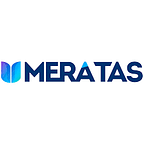Key Takeaways From ASU + GSV Summit
Everyone Deserves Equal Access To Their Future
This past week education leaders gathered in San Diego for the annual ASU GSV Summit.
The ASU + GSV Summit features a diverse lineup of thought leaders who will share firsthand stories of inspiration and innovation. This conference brought together entrepreneurs, investors, and industry experts eager to start the dialogue necessary for success. From K-12 to Higher Ed, it was cool to see so many people partner together to find solutions to problems. My team and I were thrilled to join everyone, learn from each other, and share our unique insights that building Meratas has given us.
A Brief Background
The ASU GSV Summit is one of the leading educational technology conferences and started in 2010. The summit is a collaboration between ASU (Arizona State University) and GSV (Global Silicon Valley). With 12 years of conferences, the summit always connects some of the brightest minds in the EdTech space.
The summits are full of actionable insights, human-centered connections, transformational experiences, and unexpected discoveries. The attendee list grows every year and boasts an average of 15,000 attendees. With so many thought leaders in the education space in one place, there was a lot we took away from this conference.
Make Financial Aid Make Sense
Why are stories like these so common?
“I didn’t know what to expect the first time I stepped foot in a college financial aid office. I assumed it would be the easiest part of college. Who knew I would be bawling in front of a stranger, telling them about one of the most humiliating and heartbreaking experiences of my life?” — Lizzy Shoben
“My financial-aid officer didn’t understand why I worked so many jobs or why I picked up even more hours at times.” — Anthony Abraham Jack
We don’t just need to help students have a better financial experience; we need to find ways to teach the people in the financial aid offices how to better present the options students have and how to use the tools at their disposal. For example, students today are confused when they are signing up for loans. They’re tired of trying to make ends meet, and they’re tired of the stress of not knowing what exactly they’re signing up for. So we need to re-educate educators to explain financial aid in a way that clearly presents its value.
There are fewer and fewer students going to college, and when a student’s financial aid is confusing and if they aren’t options that work for their specific situation, they will drop out. There has to be better financial literacy training for students. It could be at the high school level or offered as a free college pre-requisite class or training. Either way, students need to fully understand their financial options and which is the best option. Part of the issue with alternative options to student loans is that students aren’t familiar with them, so students are confused and aren’t set up for financial success.
If students are well prepared for their financial journey, they will be better set up for success in their academic journey. No student should have to forgo higher education because they’re confused or worried about affording their payments.
Broadening access to education and enhancing career mobility for all students is crucial so we can better prepare workers for the jobs of today and the careers of tomorrow.
Students Need to be Career Prepared and have Access To Additional Options
“ A national labor shortage has benefitted workers in the form of higher pay and greater agency in choosing an employer. In turn, employers — especially those with urgent shortages in essential roles — are seeking to differentiate. “They realize the difference they can offer to workers are skills, and workers don’t ask for skills. Instead, they ask for career advancement,” — Romer Carlson explained at the Summit.
The demand for career advancement drives a need among working adults to acquire new skills and competencies. At the same time, institutions are working to fill their seats. By meeting that demand together, employers can strengthen talent attraction and retention, articulate career mobility pathways, and address skills gaps by offering access to education through better financial options.
Romer Carlson also pointed out that this is a key area where major employers can make a huge difference. “…the striking thing that we find in our work with employers on one side and university partners on the other is that, at some level, the average CEO now has more insight into the skills we need five years from now than then a university president has access to and that’s a problem. We need to get that data available to everybody.”
Students Need More Options
Offering students more options to pay for their education at your institution is crucial to both schools’ and students’ success. The more options students are given and the better they understand these options, including which is the best option for where they are in life, the more likely they are to pursue their education of choice and have a better overall experience.
The ASU GSV summit allowed me and my team to learn from the innovators, entrepreneurs, educators, and changemakers from around the country, and I’m thankful for that. By gathering the top minds and leading companies from across the industry, untapped potential is discovered, trends are identified, and innovators find inspiration for changing the future of their business.
My team and I at Meratas are on a mission to unlock opportunities for those looking to upskill or start a new education. If you’re interested in helping your students do this, check out our Partner’s Page to learn more!
